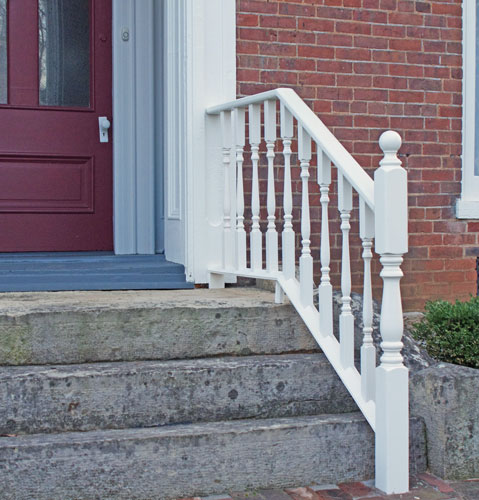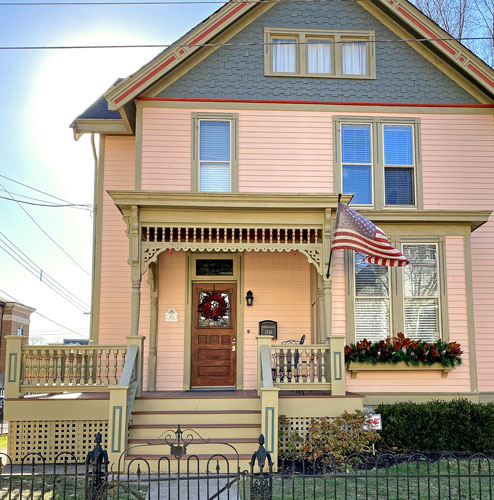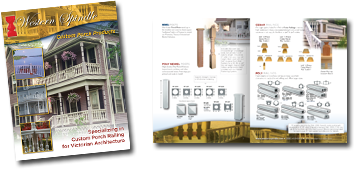Historic District Porch Restoration
Need your porch railing restoration approved by your local historical society?
This is a common situation that we run into all the time. You need a porch restoration. The builder or homeowner must follow the rules of the historic district. They need permission for the new railing materials. This especially true for homes on the national register of historic homes.
Should the property owner want replacements in wood, we are able to create duplicates of the original balusters and railing using rot-resistant Cedar or Mahogany. If you need, we can send you samples to take to your historic preservation board for approval.
The local preservation society approves our standard profiles and designs many times because they are historically and architecturally accurate. The new rail is resistant to rot. Follow our installation instructions for years of trouble-free use.
But what if I want to replace my historic railing with a synthetic material so it never rots again?
Our polyurethane alternative mimics wood so closely that many historic communities have approved its use in historic structures across the country. We have customers get told by their historic commission that they can only replace their existing millwork with wood products. However when the board sees our Polyurethane balusters and railings, they often change their minds.
Once they have their hands on it and see for themselves, they agree that the warm feel and crisp lines actually does look and feel like wood. We have many, many examples of our customers successfully gaining approval of the local historical society for porch railing replacement using our synthetic polyurethane products. Let us know if you’re in this situation, and we’ll send you samples for approval by your board.
Here are just a few examples of our customers successfully gaining historical commission approval.
An architect in Knoxville TN writes “Since it’s in a historic district, we’ve got some limitations on how much we can vary from the original design. The original had quite a tight gooseneck. How right a radius are you all able to do?” They were able to easily get our 4 1/2″ Polyurethane Railings approved with their historic building district. 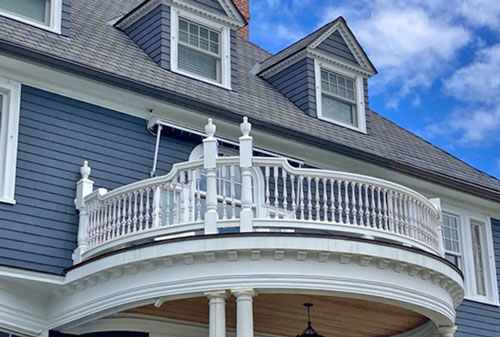
Many local historic preservation commissions are extremely reasonable to work with. A Minnesota design-build firm writes:
“We have a project in St Paul, MN and are looking to rebuild a porch with railings and balusters that are similar to what is there now. The project is in a historic district and we’ve gotten permission to deviate from replicating exactly what is there.
Your classic baluster is in the ballpark of what we need. The railing however is proving more challenging, especially with the gooseneck. Is this something you can fabricate for us?”
We provided them with our two gooseneck rail options (the 4 1/2″ Poly Railings, and the 7 1/4″ Poly Railings). They went with our 4 1/2″ gooseneck rails and 3 1/2″ Classic Baluster and ended up with a stunningly beautiful porch remodel.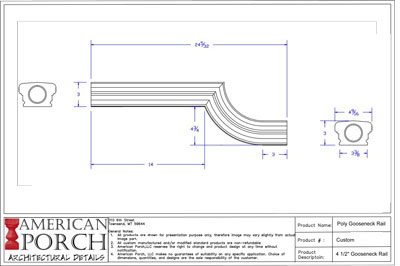 M.B. of Wilmington MA writes “Thanks for reaching out. The materials (samples) arrived in great condition and our clients love them. We finally have approval from the Historic District Commission so we are moving forward with the project.”
M.B. of Wilmington MA writes “Thanks for reaching out. The materials (samples) arrived in great condition and our clients love them. We finally have approval from the Historic District Commission so we are moving forward with the project.”
F.H. writes “I finished the handrail as soon as the spindles and newel post arrived, on our circa 1875 house. It turned out great!
I am a woodworker so I made the handrail and lower rail. We live in the historic district in Bardstown, Kentucky; and this addition blends right in with the hundred or so other updates/renovations/remodels we have accomplished over the last 4 ½ years. Thanks for asking.”
“My front porch is finally done and finishing step 13! [see install instructions for that inside joke] Thank you for creating a great service and product.
Renovating the porch on my Victorian home built in 1884 and located in Cincinnati’s Oldest Historic District of Columbia Tusculum was no small task for me as a novice DIY’er. I replaced the flooring with composting tongue in groove and the railings and spindles with American Porch products. Thanks to you I was able to keep the charm of the house with a product that will last for many years. ”
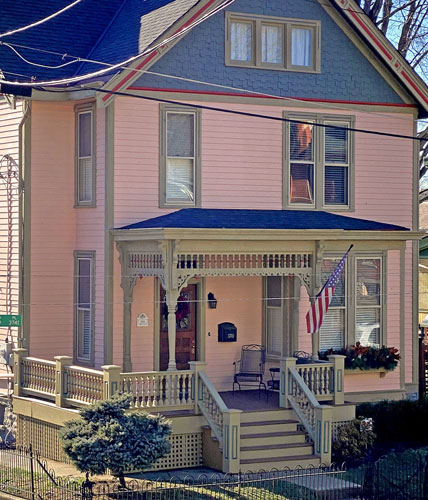 Speaking to you a few minutes ago about the possibility of American Porch manufacturing custom spindles to match the ones currently on a Victorian porch that is being renovated was a pleasure. The house is in an historic district and the goal is to make it even better than the original.”
Speaking to you a few minutes ago about the possibility of American Porch manufacturing custom spindles to match the ones currently on a Victorian porch that is being renovated was a pleasure. The house is in an historic district and the goal is to make it even better than the original.”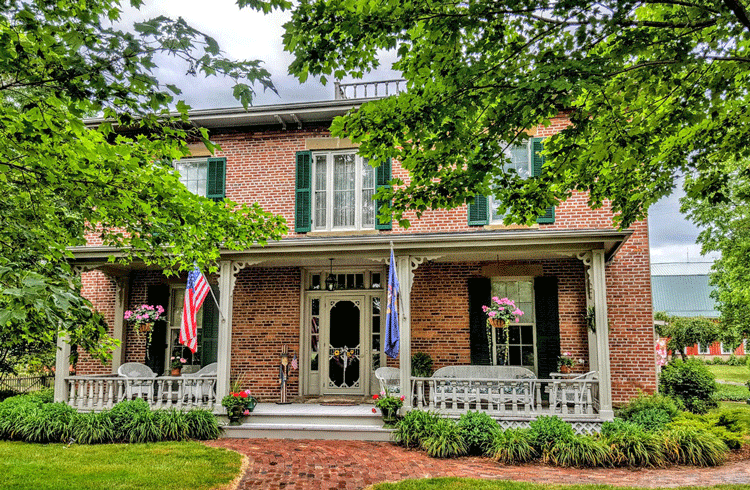
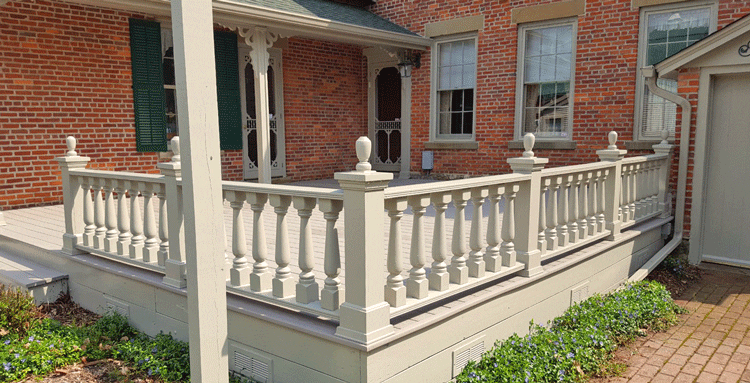
Samples shown at a meeting often result in this
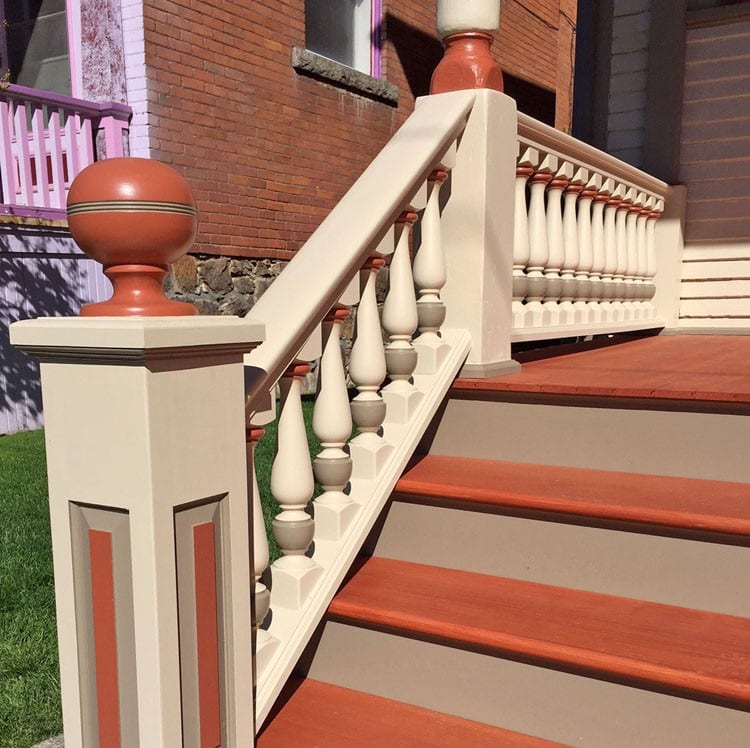
H.F. of New Haven CT wanted to stay with wood, and chose our Mahogany hardwood option for it’s durability and smooth finish. He wrote “I am looking to replace a number of spindles on the porch on a Victorian house. I have attached a photo of the spindles that need replacement.
Because we are in an historic district, I need them to be the same design as the original. Ultimately it looks like we will need to replace 100 spindles as we are having a problem with rotting on both the first and second floor porches and the house is in an historic district so we have to replace to match the existing.” We replicated his existing size and design exactly.
Get your historic porch railing restoration approved by the local historic preservation commission.
We make historically accurate and period correct porch railings for customers every day. Many prefer to stick with real wood for their authentic reproductions.
If your project will be particularly exposed to harsh conditions, consider using our polyurethane line of beautiful millwork. They have been used on many historic homes and buildings across the country. Because the material so closely mimics wood, many historic communities have approved its use for historic porch projects.

